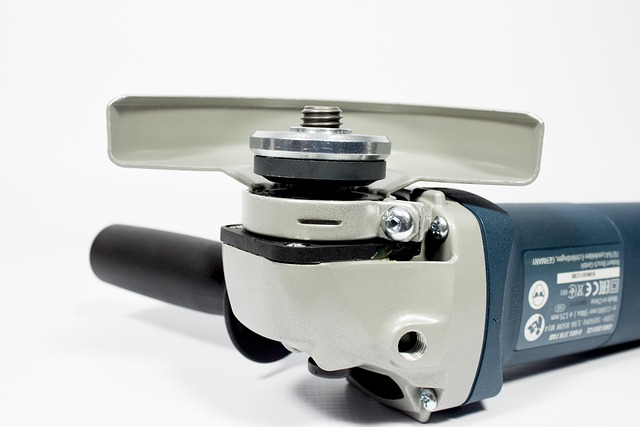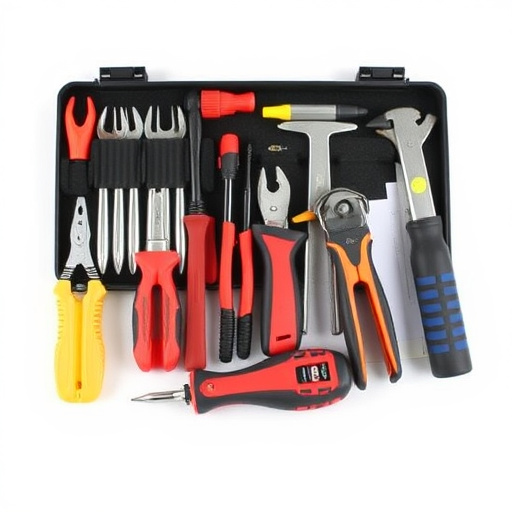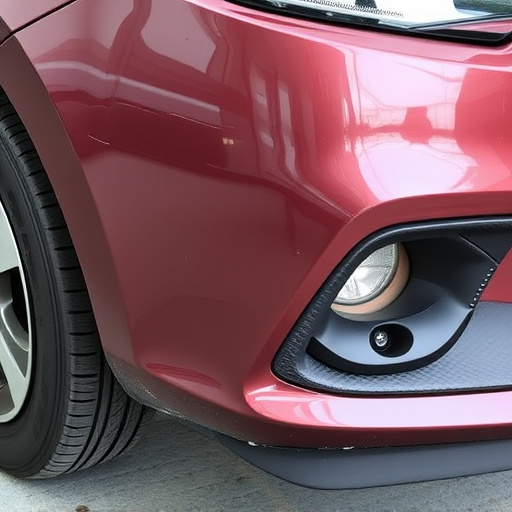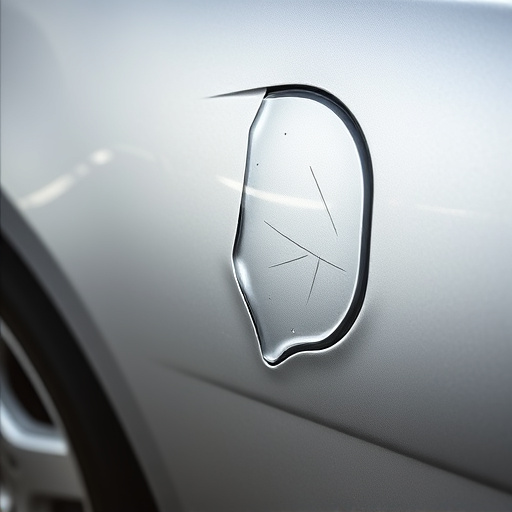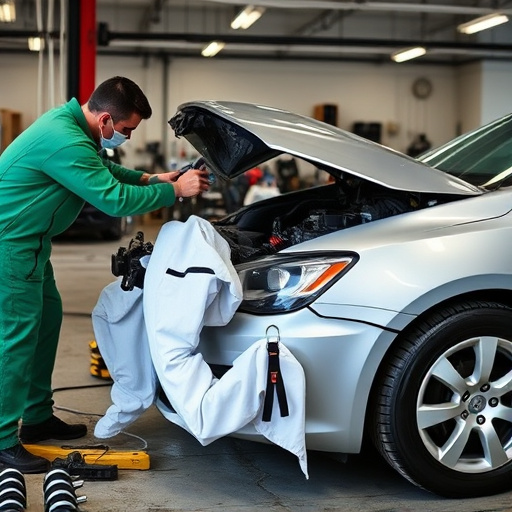Diagnosing and mitigating wind noise in a Tesla Model S involves inspecting the front end for gaps, misalignments, and loose trim. Specialized tools measure air pressure differentials to identify problem areas like faulty weather stripping or misaligned body panels. Corrective actions, such as repairs or replacements, reduce wind noise, enhance passenger comfort, and improve vehicle performance. This guide details the Tesla Model S front end repair process, focusing on addressing wind noise and panel gaps through meticulous examination, disassembly, adjustment/replacement of panels, proper sealing, reassembly, and testing under various conditions.
Experiencing annoying wind noise or visible panel gaps on your Tesla Model S? This comprehensive guide is tailored for owners seeking a solution. We’ll walk you through the process of diagnosing and repairing these common issues, ensuring your electric vehicle returns to its sleek and silent state. From identifying problem areas to implementing effective fixes, this step-by-step approach will empower you to tackle front end repairs with confidence.
- Diagnosing Wind Noise in Tesla Model S Front End
- Identifying and Addressing Panel Gaps Effectively
- Step-by-Step Guide to Successful Front End Repair
Diagnosing Wind Noise in Tesla Model S Front End
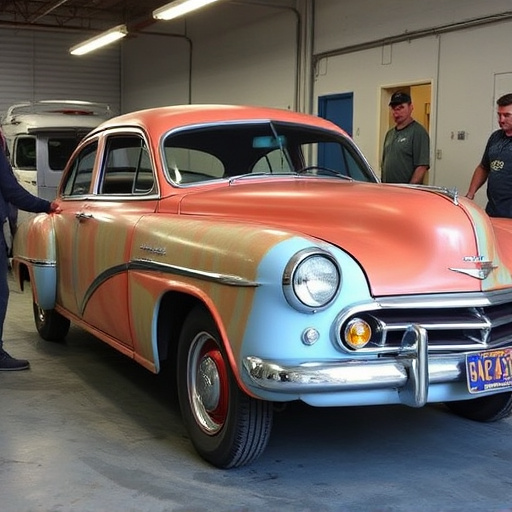
Diagnosing wind noise in a Tesla Model S front end involves a systematic approach to pinpoint the source of the disturbance. Start by inspecting the vehicle for any visible gaps or misalignments in the body panels, especially around the doors, hood, and trunk. These areas are common culprits for air leaks causing wind noise. Check for loose or damaged trim pieces that might be rattling at higher speeds, as well as worn-out weather stripping that can no longer effectively seal against the elements.
Using a diagnostic tool to measure air pressure differentials across various panel joints can help identify specific problem areas. An automotive body shop with specialized tools and expertise in Tesla Model S front end repair will be able to perform these tests accurately. Once the source is located, whether it’s a fender repair, weather stripping replacement, or another type of body work, addressing these issues will significantly reduce wind noise during driving, enhancing both passenger comfort and the vehicle’s overall performance.
Identifying and Addressing Panel Gaps Effectively
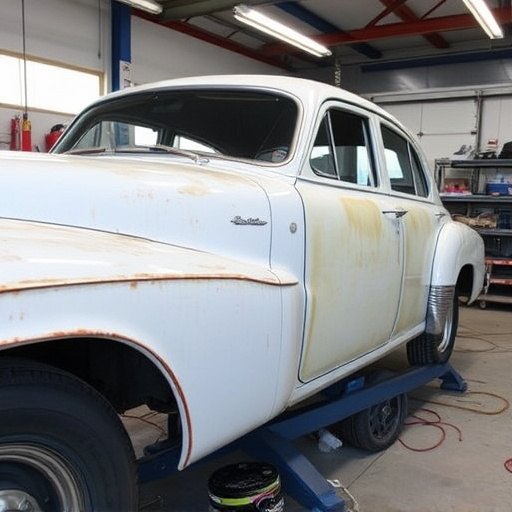
Identifying panel gaps in your Tesla Model S is a crucial first step in any front end repair process. These gaps can be caused by various factors, including manufacturing imperfections or damage from previous accidents. During a thorough inspection, pay close attention to the areas around the fender, door sills, and bumper for any visible misalignments or gaps. Using a specialized tool, such as a gap gauge, you can precisely measure these openings to determine their severity.
Addressing panel gaps effectively involves precise and skilled craftsmanship. Professional luxury vehicle repair technicians employ specialized equipment and techniques tailored to the Tesla Model S’s intricate design. This may include using precision tools for adjustments or even replacing faulty hardware. A well-executed fender repair or collision repair will not only resolve wind noise but also ensure the vehicle’s exterior panels align perfectly, enhancing its sleek and modern appearance.
Step-by-Step Guide to Successful Front End Repair

For a successful Tesla Model S front end repair addressing wind noise and panel gaps, follow this step-by-step guide tailored for precision and effectiveness. Begin by examining the affected areas meticulously, identifying the sources of wind intrusion and misalignments. Next, gather all necessary tools and high-quality replacement parts specifically designed for your Tesla Model S to ensure compatibility and optimal performance.
Demolish the interior trim and panel components carefully to gain access to the exterior body panels. Use specialized tools to adjust or replace damaged or misaligned panels, ensuring seamless fitting. Seal any gaps with appropriate adhesive or sealants to prevent future water intrusion and wind noise. Reassemble the vehicle meticulously, double-checking all connections for a secure fit. Once complete, test drive your Tesla Model S under various conditions to confirm effective noise reduction and improved overall performance, transforming your luxury vehicle restoration experience into a seamless journey.
The process of repairing a Tesla Model S’s front end for wind noise and panel gaps can significantly enhance both the vehicle’s performance and aesthetics. By diagnosing the issues accurately, identifying minor gaps, and following a structured guide, car owners can achieve professional results at home. A well-executed Tesla Model S front end repair not only reduces disturbing noises but also ensures your vehicle looks as sleek and precise as it did off the assembly line, contributing to a more enjoyable driving experience.
